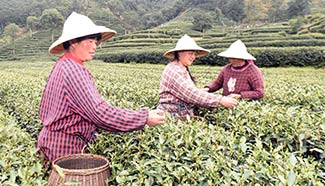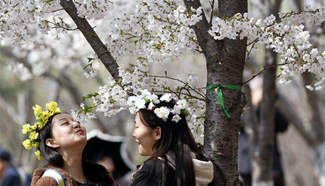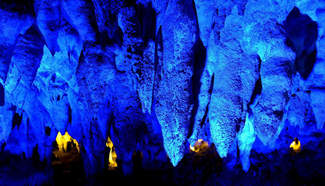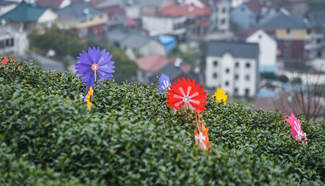URUMQI, March 28 (Xinhua) -- A botanic garden in a Xinjiang desert announced Tuesday that the number of seedlings it fostered for sand control has exceeded 1 million.
A new group of 100,000 sacsaoul and 10,000 nitraria plants -- bushes that anchor the sand with their roots -- will be transported to nearby oil fields and other sites.
They were planted in the Tazhong Desert Botanic Garden, which is located deep in the Taklamakan Desert, Xinjiang Uygur Autonomous Region.
The Taklamakan Desert is known as the "sea of death" across China. In the Uygur language, its name means "go in and you won't come out."
In 2003, the Xinjiang Institute of Ecology and Geography under the Chinese Academy of Sciences established the botanic garden to study and foster desert plants.
"A desert's center is extremely short of water and fertile soil, and is confronted by moving dunes and sandstorms. Plants grown in such an extreme environment are more resistant to drought and alkaline," said Chang Qing, a senior engineer from the institute.
Over the past 14 years, the garden has produced over 1 million seedlings, which can cover 2,000 hectares of land, Chang said.
The garden's experience and techniques have also been shared with many countries including Libya, Turkmenistan, Kazakhstan and Mauritania.












